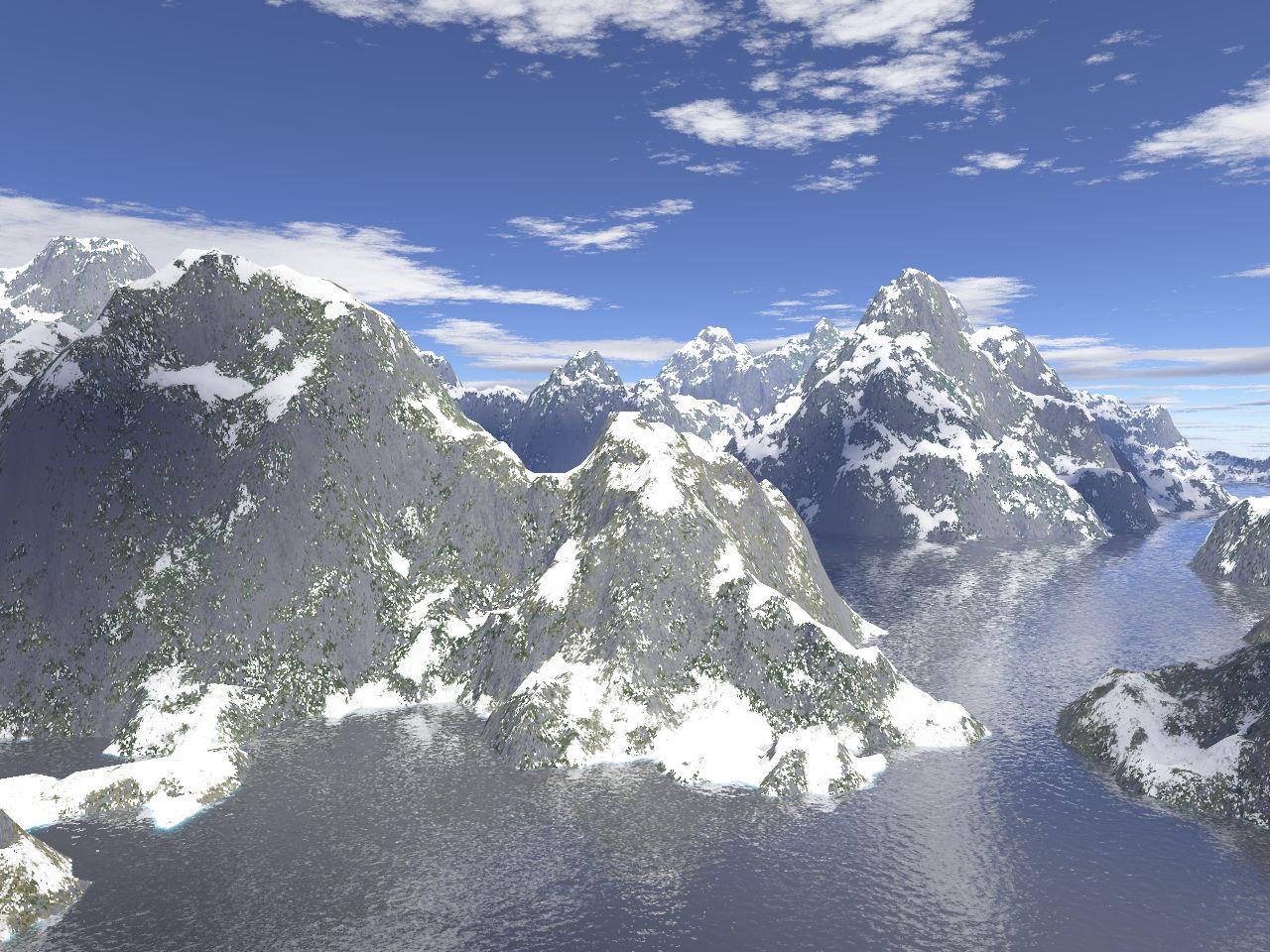
Many of the fractal landscapes that drew attention through the early 1990's were the work of Benoit Mandelbrot and his various students and collaborators. Perhaps one of the most prolific of those who worked with Mandelbrot is F. Kenton Mugrave, who in addition to his academic work was creator or consultant on a large number of terrain generation and visual effects projects. His dissertation offers offers a theoretical discussion of techniques for generating terrestrial landscapes and a wide variety of planetscapes, along with various visual effects. Large numbers of code examples are also presented, but alas no images, as the color plates included with his dissertation have been lost.

A much shorter extract and variant from one of the courses Musgrave taught can be found online, and is much more to the point. He was also coauthor of a reasonably accessible (for programmers, computer scientists, etc.) book that has become a classic the on topic, Texturing & Modeling: A Procedural Approach.
The approaches Musgrave outlines for terrestrial scene generation work well on a relatively small scale, but there are downsides to using those approaches to model the entire surface of an Earth-like planet. You get something like these:




I've "flattened" these four down to display as only blue green, for land and water, rather than elevation detail, but even with elevation-based detailing added, they still don't look very realistic. See the two images below for an example of what I mean.


They lack the long, parallel, relatively-narrow systems of mountain like the North American Cordillera. Missing too are mountains like the Himalayas and Alps, wider bands of mountains resulting from different plate interactions.
There are ways to try to improve upon these methods, but the fractal methods simply have some inherent flaws. In future posts I'll address some of those improvements (e.g. statistics-based, example-based, etc.), and non-fractal approaches (e.g. crude plate tectonics simulations). For now, adieu.

No comments:
Post a Comment